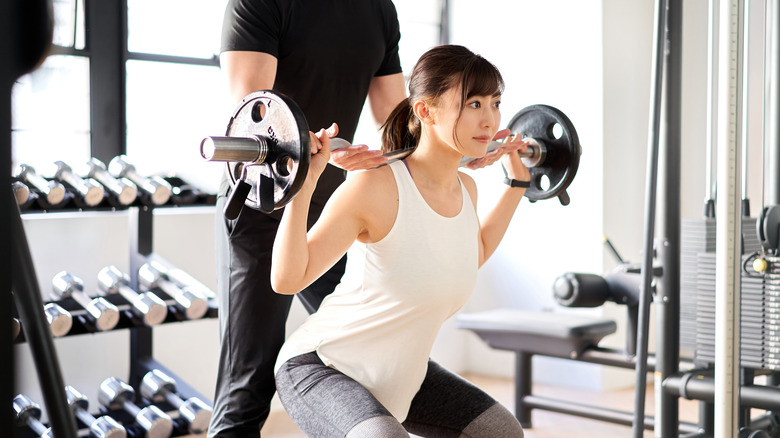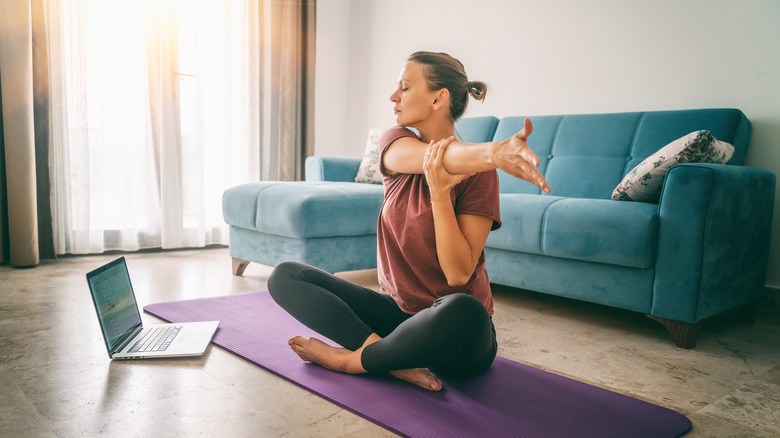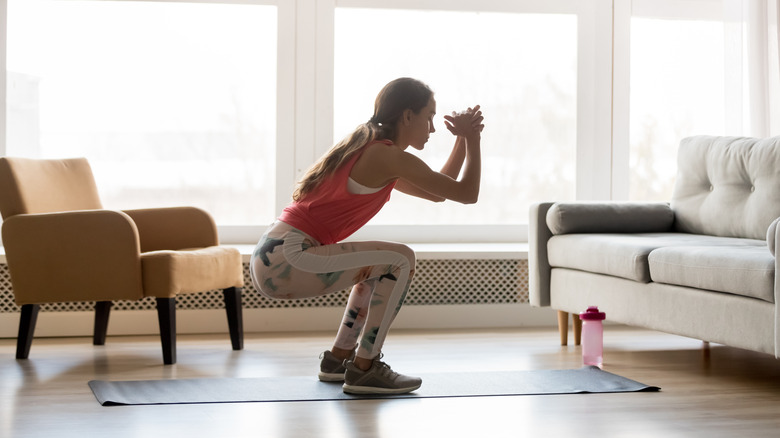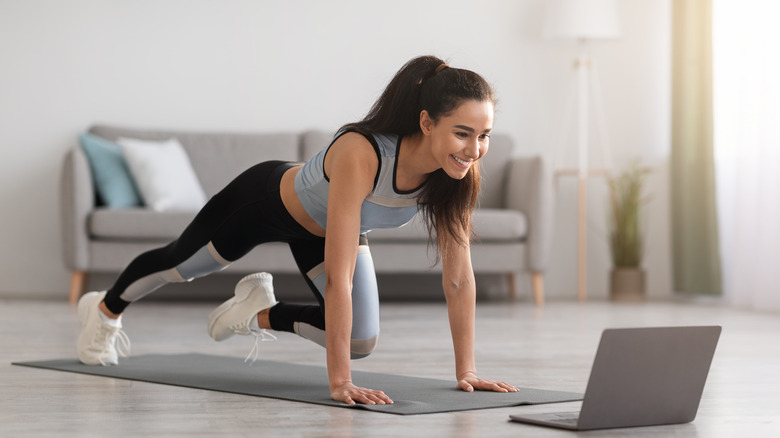Here Are The Stretches You Should Do Before Lifting Weights
Fancy giving weight training a try? Before you do, make sure that you're smart about your approach — aka don't make the mistake of failing to take the warm up process seriously. As per Self, when life is hectic, it's easy to assume that your best option is to simply jump straight into a workout. However, if you choose to move into a workout too quickly, you could end up injuring yourself.
It can be tempting to maximize your time by not stretching but this isn't a mistake you want to make. As per Healthline, not only can skipping your warm up lead to an injury, it can also prevent your body from working as efficiently. According to Danielle Burrell, a NASM-certified personal trainer, who spoke to Self, "Exercising without a warm up is a huge no-no. When you are performing strength-training exercises, your muscles shorten and lengthen, and if they aren't warm or 'prepped,' your muscles are more prone to tear and pull."
So, warming up is undeniably important, but what are the best stretches to do before lifting weights?
Stretching: What should you know?
The good news is that, as per Self, you only need around five minutes to warm up when it comes to preparing for weight lifting.
According to Aubrey Watts, C.S.C.S., a performance center coordinator and assistant strength coach at the National Strength and Conditioning Association, a successful warm up needs to be specific in regards to the range of motion needed for the particular workout. She explained, "So if you are about to do an upper-body lifting session, you may want to spend more time on priming your shoulders and thoracic spine (upper back) and activating your core and glutes. In contrast, if you are about to go for a run or do some sprinting intervals, you may want to prime your hips and ankles and activate the glutes as well."
Trainer Danielle Burrell has some great warm up ideas as well and explained to Self that her go-to workout "wakes up every muscle" that will be used for the strength training exercise. For releasing tension within the body before a workout, she also recommends foam-rolling.
Squats are the perfect warm up
As per Healthline, when it comes to your pre-weight lifting stretches, it's perfectly fine to start out with easier options and then make the stretches harder as your body adjusts to the movement. For warming up, start your stretching with squats. According to BarBend, warming up properly before lifting weights can aid your lift in a number of ways, including increasing body temperature, increasing blood flow and oxygen delivery around the body, and can help to increase injury prevention.
Healthline also reports that squats are a versatile way to target a wide range of muscles in the lower half of your body, such as the hamstrings and glutes, while helping you to warm up. To perform a squat, Runner's World recommends that you move your hips backwards (as if you're about to sit in a chair) and bend your knees, lowering your body down as far as you can, while keeping your chest lifted upwards. The movement should be controlled, and you should be able to hold the position and repeat.
Can't do a full squat? Make the movement easier by starting with a half squat, and over time, as your strength grows, move into a full squat. As per Shape, one of the great things about squats is the fact that once you've mastered squatting, you can add weights into the mix and start doing a weighted squat as part of your workout.
Planks target your core
To help increase core and back strength, planks are a great option when warming up. Plus, they help to improve your balance and posture. According to Verywell Fit, the plank exercise helps to work your core by targeting your abdominals and other core muscles. As per Well + Good, to perform a plank position, lay on the floor and push your shoulders directly above your elbows and keep your hips in line with your shoulders. While hovering your body a few inches above the ground, keep your toes touching the floor. Hold the position for as long as possible and then repeat.
It can initially be a hard stretch to do, but the more you practice it, the easier it becomes to hold for longer periods of time. And once you've nailed the plank position, you can even add in some variations to make things a little more challenging.



